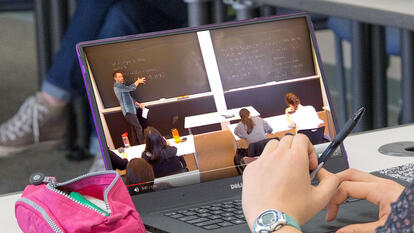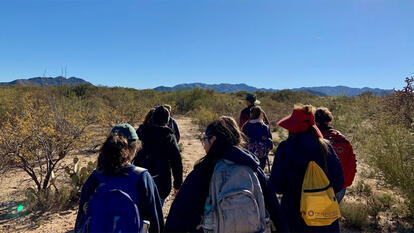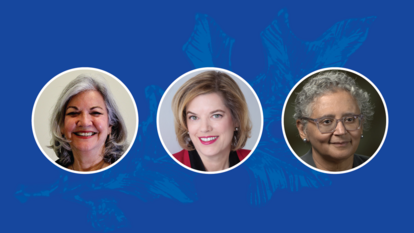
“This One Time in Siberia”: Reflections on the 20th Anniversary of Wellesley’s Lake Baikal Program
The summer I was nineteen years old, I went to Siberia. I boarded a plane with a group of fellow Wellesley students and faculty members and spent three weeks in, around, and on Lake Baikal, the deepest and largest (by volume) lake in the world. We stayed in Bolshiye Koty, a tiny village of less than 100 people that, in the summer, is only accessible by boat or hiking trails. (In the winter, people drive there across Baikal’s thick ice.) I saw the famous local nerpa (freshwater seals unique to Baikal), studied giant amphipods, sat in a steaming sauna, swam in the freezing lake, drank vodka by a campfire, got a terrible stomach bug, rode the trans-Siberian railroad from Ekaterinburg to Irkutsk, and slept on the deck of a Soviet-era ship under the Milky Way.
Lake Baikal: The Soul of Siberia was first offered as a hybrid Russian area studies and environmental science course in 2001, the brain child of biology professor Marianne Moore and Russian professor Thomas Hodge. Students who take the course spend the spring semester in a seminar that digs into the scientific, cultural, and historical significance of the lake and Siberia in general, taught by both Russian and science professors, and then travel to Baikal the following summer to study the lake in person. This year marks the twentieth anniversary of the course, and in the past two decades nine groups of students and faculty have made the 5,921-mile journey from Wellesley to Baikal; the next course is tentatively planned for spring/summer 2022.
My trip to Baikal was fourteen years ago now and it’s still a place I think about almost every day. The same goes for many of the 100-plus Wellesley students, alums, and faculty who have also traveled to Siberia as part of the course, several of whom generously shared with me their own memories, reflections, and how Baikal has made a lasting impact on their lives.
“Immersion in Siberia requires students to stretch themselves linguistically, culturally, and as scientists. Beyond academic growth, however, both faculty and students explore an indescribable natural setting and draw very close to the wonderful people who live there,” wrote Hodge. “The experience leaves an indelible imprint on all of us, an awareness of the earth’s great beauty and fragility and of our responsibility to care for it.”
“My Baikal experience was the first time I felt myself as a witness and participant in the turning gears of history,” wrote Allaire Diamond ’01, who was part of the very first Baikal trip in 2001 and recently reflected on her experiences for Wellesley Underground. “I went in a time of personal transition: the summer after my senior year, when I had already graduated and was on the cusp of figuring out my career path forward. It was just a few weeks before September 11, 2001, when the world changed dramatically, and in Russia I saw really interesting juxtapositions between old and new: Soviet-era statues beneath giant billboards advertising chewing gum; the village of Bolshiye Koty looking like it was preserved from the 18th century; rocky river deltas emptying into the lake, looking wild but impacted by a legacy of prison camp gold mining upstream; amazing long-term biological data about Baikal at the research station, alongside an abacus that was still in use.”
“My Baikal experience was the first time I felt myself as a witness and participant in the turning gears of history.”
Allaire Diamond ’01
“Teaching and conducting research at Lake Baikal have shown me what I wish all Americans could experience,” wrote Moore. “Russian people, contrary to many U.S. stereotypes, are warm, gracious, fun, and some of the most hospitable people on Earth!” This, too, was something I learned while at Baikal, and something I reflect on regularly today, whenever Russia is in the news. “Three-and-a-half years after retiring from Wellesley,” added Moore, “I am still collaborating with my Russian colleagues on scientific papers and educational projects. One project I’m particularly excited about is a potential virtual reality exchange for high school students from the Lake Baikal and the Lake Superior regions that explores the cultural and scientific differences and commonalities of these two places and their peoples.”
Grace Callahan ’21, who was at Baikal on the most recent trip in 2019, wrote: “Examining one place through literature, art, biology, geology, and history was a new and exciting academic experience for me. This course revealed new ways to think about the connections between nature, science, and culture.”
Examining one place from so many angles, in the place itself, is really what gives the Baikal course its power. Meg McClure ’15, part of the 2013 trip, wrote of the voyage sailing up the lake, to Olkhon Island. “We stopped for the night near a small beach, and when we climbed up on the cliffs above, we were suddenly surrounded by steppe, as far as you could see,” wrote McClure of the rolling, flat, unforested grassland native to Siberia and Mongolia. “I remember climbing up to the top of a hill and watching the sun set and the moon rise over the lake and realizing that there was no place on earth that I would rather be in that moment.”
An avid fisherman, Hodge remembered an overnight fishing expedition in 2003 to net omul with some of the Russian hosts. “We were in deep water, eight or ten miles offshore, on a little boat called the Nessie,” wrote Hodge. “A flat pebble had lodged in the tread of my boot and was clanking as I walked on the metal deck. I pulled it out and tossed it over the side. It suddenly occurred to me that this pebble might take a half hour to reach the bottom of the lake. Somehow, that's what first brought home to me the nearly incomprehensible size of Baikal.” You can read about the superlative stats of Baikal all you want, but it’s hard to really feel it until you are staring into crystal clear water and can see a hundred feet down. It’s one thing to look at that blue crescent on a map; it’s another to be standing on its shores and realize you are smack in the middle of the largest continent on Earth.
A transformative trip like Baikal can also impact the trajectory of a student’s academic study or career: the majority of Baikal alums have done work directly influenced by their time in Siberia. Diamond became an ecologist, while Mariah Levin ’03, also on the first Baikal trip, pursued a Fulbright Fellowship studying public health issues in the former Soviet Union. Kirstin Neff ’08, who was at Baikal in 2005, double-majored in Russian, completed a Ph.D. in hydrology, and now works as a program manager for the National Fish and Wildlife Foundation, directing investments in aquatic species conservation in the Southwestern U.S.
Having my first experience with Russians be with people who identified strongly as Siberians and Buryats showed me that there is so much more diversity within Russia than what we see from the U.S.”
Meg McClure ’15
Dr. Catherine “Katie” Brinkley ’04, who went to Baikal in 2003, is now an associate professor in human ecology at UC Davis, studying social science and the environment, and they now even teach a study abroad program directly inspired by The Soul of Siberia course. “The opportunity to spend several weeks asking questions and trying to answer them was pivotal to my decision to major in Geosciences and now as a Ph.D. student in forestry, I appreciate even more the experience of being in a place with such massive unmanaged forests like the Taiga,” wrote Sarah Smith-Tripp ’19, who was at Baikal in 2016. “Plus,” she added, “it is fun to say ‘this one time in Siberia.’”
“As a Russian major who continues to work in Russian/Eurasian affairs, I cannot have asked for a better introduction to Russia itself than the Baikal trip,” wrote McClure. “Even after subsequent trips and studying/interning in Moscow and St. Petersburg, this first visit stuck with me. In the past eight years since my Baikal trip, I think it has become easier and easier for those of us living and working in the United States to view Russia (and Russians) as a monolith. Having my first experience with Russians be with people who identified strongly as Siberians and Buryats showed me from the very beginning that there is so much more diversity within Russia than what we see from the U.S., and the perspectives and stories are lost when we try to essentialize a single Russian identity.”
In short: Baikal is life-changing.
As a Russian major at Wellesley, I ended up studying in St. Petersburg the year after my summer at Baikal, from June 2008 through June 2009. Before my twelve-month visa expired on July 1, one of my best friends from home flew to St. Petersburg to join me for a trans-Siberian adventure. She researched cities she wanted to visit along the train route, but I only had one request: I had to get back to Baikal. My Russian was the best it ever was (and probably ever will be), and I remember the pride I felt as I navigated dozens of trains, buses, and boats to get my friend and myself to Baikal’s shores. We stayed in a hippie hostel on Olkhon Island, and when I threw back the homemade patchwork curtains and saw the blue of the lake, the sight hit my chest in a way that I had only felt before when I saw a crush. Was this love? I put on my bathing suit and made my way down to the rocky beach, diving into the freezing water, letting Baikal seep back into my pores. This place would be part of me forever, I knew. I cried when we boarded the train again, leaving Baikal to continue our trip into Mongolia and China. I have been plotting a way to get back to Baikal ever since.
But in some ways, with Baikal, with any immersive learning experience, it’s less about when you’re actually there and more about the way it works into your soul after, the impact of a place lasting a lifetime. I think Leslie Ordal ’04, who was at Baikal in 2003, said it best: “I carry Baikal with me wherever I go.”



